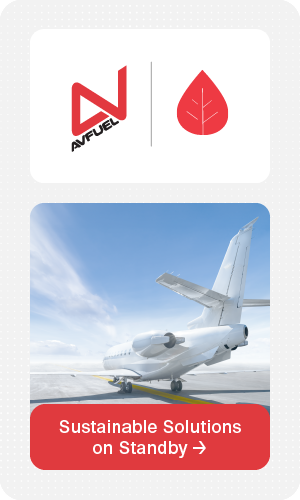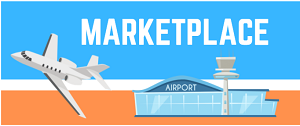Standing in the way of “success” for many aviation businesses are matters that appear to be technical in nature – and in need of a technical solution. We address hangar rash, maintenance issues, deviations, incursions, and even service failures by remediating technical training or revising technical documents. We ask, “How did this happen? Why didn’t ‘they’ follow procedures, abide by policy, or simply do it the way they were trained?”
The truth is we are not machines, repeatedly executing simple commands to near perfection thousands of times a day. We are human—a fact that has become a negative label, as if being human is somehow less than ideal. We sit through human factors courses telling us all the ways we make mistakes and all the reasons for our failures. We have even given this idea a catchy, Hollywood-sounding name: The Dirty Dozen. If we could just engineer or train the human out of the system, we would be successful, right?
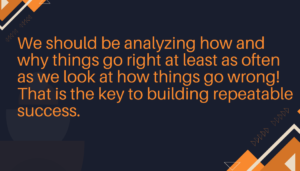 As humans, though, we get it right far more often than we get it wrong. Our teams operate in complex and ever-changing environments with competing demands, incomplete information, less than optimal resource availability, and at high risk to their personal safety and livelihood. By extension, our jobs even affect the security of our families and loved ones. Despite this web of obstacles and challenges, our teams succeed more than they fail; no business would survive a day if that weren’t true. However, this success isn’t just because we have great policies, procedures, and training; no machine simply following instructions could accomplish the tasks we ask our teams to complete every day.
As humans, though, we get it right far more often than we get it wrong. Our teams operate in complex and ever-changing environments with competing demands, incomplete information, less than optimal resource availability, and at high risk to their personal safety and livelihood. By extension, our jobs even affect the security of our families and loved ones. Despite this web of obstacles and challenges, our teams succeed more than they fail; no business would survive a day if that weren’t true. However, this success isn’t just because we have great policies, procedures, and training; no machine simply following instructions could accomplish the tasks we ask our teams to complete every day.
We are successful because we are human! As humans we can anticipate problems, cooperatively plan and strategize, adapt to changing conditions and demands, and function successfully with imperfect information. Policy, procedure, and technical training are necessary, of course, but they are not the source of our success. That success is rooted in our humanity. Great leaders recognize this fact, even if only unconsciously. Book after book tells us how to build effective leaders, yet conspicuously, they do not extol the virtues of tightly constructed policy, procedures, and training. They do, however, focus on building great people with the knowledge and skills to help those they work with be great as well.
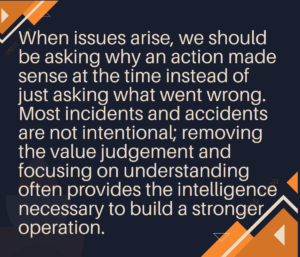 Building capacity as humans working together means unapologetically acknowledging that we are sometimes emotional, distracted, or tired. Those are the trade-offs, though, that come with being adaptable, resilient, and creative. Policies do not create innovation – people do. If we are to adapt to the world around us, we must think differently about our teams and the people within them.
Building capacity as humans working together means unapologetically acknowledging that we are sometimes emotional, distracted, or tired. Those are the trade-offs, though, that come with being adaptable, resilient, and creative. Policies do not create innovation – people do. If we are to adapt to the world around us, we must think differently about our teams and the people within them.
We have reached a point in our industry where many of the challenges we face cannot be solved by simply putting more, or even better, words on paper. Our issues can and will be solved by investing in people, by recognizing that organizational strength is rooted in human strength. We have invested in building great policy statements, tightly knit procedures, and interactive technical training. How much are we investing in developing our people and teams? How often do we teach individuals how to utilize the human skills, knowledge and attributes that already make our business strong, so that they in turn can help build up other people, teams, and an organization that is even more 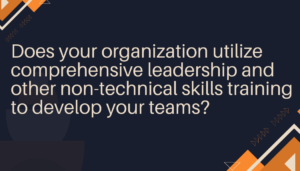 successful? Purposeful development of how we lead and follow, how we communicate and organize, how we manage distraction and fatigue will help to build that success by closing the gaps between the skill needed to complete a task and the skills needed to strengthen an organization with a common purpose.
successful? Purposeful development of how we lead and follow, how we communicate and organize, how we manage distraction and fatigue will help to build that success by closing the gaps between the skill needed to complete a task and the skills needed to strengthen an organization with a common purpose.
Finding success and navigating the complex issues that exist in our industry must begin with a recognition that many of what we see as technical problems are rooted in and best addressed by strengthening the non-technical knowledge and skills in our teams. Many leaders hold their positions because of a track record of technical acumen; how many have been intentional in developing their non-technical skill set? Imagine helping build future organizational leaders in your front-line supervisory staff and the effect it would have on your operations. Then imagine what your company could achieve if that investment was part of your shared culture, part of who you are as an organization. Technical competence implemented by humans working together in a system where everyone’s s investment in non-technical proficiency is valued as a critical driver of success, not as an afterthought: that’s how success is built in the constantly changing world we operate in, and it’s how we’ll meet the future with the resilience, innovation, and determination to keep our industry strong.
By Michael France



